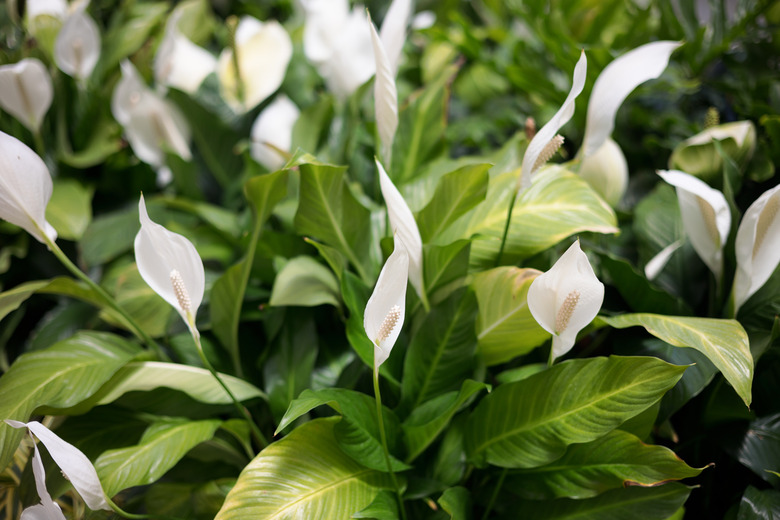How Long Will A Peace Lily Live?
We may receive a commission on purchases made from links.
It's impossible to predict how long someone will live — even if that someone is a plant. You can, however, say with some certainty whether or not a plant is likely to stick around long enough to return your investment in it. Peace lilies (Spathiphyllum sp.) are prized for their pleasing appearance, ease of growth and for their ability to clean the air. Peace lilies live on average from three to five years.
Tip
Water your peace lily with room-temperature water, but allow the water to sit out for a couple of hours first to let chlorine and other chemicals evaporate from it.
Cultural Care for a Peace Lily
Cultural Care for a Peace Lily
The better you care for your plant, the longer it will live beyond the average span. Peace lilies are native to subtropical and tropical areas and, as such, need warmth and humidity to thrive. Hardy in U.S. Department of Agriculture plant hardiness zones 11 and 12 only, they are frequently grown as indoor plants. Water when the top of the soil feels dry to the touch, but don't let it dry out too much, as this will cause the leaves to yellow and wilt. Soil that is kept slightly moist is ideal.
Peace lilies will tolerate even heavy shade, but they probably won't bloom much. If you want the plant to produce its distinctive white bracts, place it where it will receive bright but indirect sunlight, such as a north-facing window or in the filtered shade of a tree. Keep it warm — the plant does not tolerate temperatures below 50 degrees Fahrenheit very well, and temperatures below 40 degrees will likely kill its roots.
Warning
Locate your peace lily where it will stay nice and warm, away from drafts, but also away from children and pets — peace lilies are toxic to people, cats and dogs if ingested.
Benefits of a Peace Lily
Benefits of a Peace Lily
Care for your peace lily properly, and it could end up extending your lifespan — or at least, making your home a healthier place to live. Peace lilies filter certain toxins from the air — in particular, formaldehyde, benzene and trichloroethylene. This, plus their ease of care, makes peace lilies a good choice to spruce up any indoor space, including an office.
Peace Lily Pests and Problems
Peace Lily Pests and Problems
This plant is well-known for being relatively problem-free, but no plant is perfect. If something is going to kill your peace lily before it reaches a ripe old age, it will likely be a stem or root-rot disease, and these come from overwatering the plant. Make sure potted plant containers have holes to allow the water to freely drain out, and never water so much that the soil is soggy.
Too much fertilizer can also shorten the lifespan of your peace lily. Resist the urge to give your plant a full dose of food. Instead, feed your peace lily with a balanced 20-20-20 houseplant fertilizer once a month from spring through summer, but only at one-half or one-quarter of the recommended dose. For example, if the recommended dosage is 1 teaspoon per quart of water, reduce that to 1/2 teaspoon instead.
For peace lilies grown indoors, common houseplant pests such as mealybugs or mites can also become a problem. Prevention is the best cure — simply wipe down the broad leaves every once in a while with a damp cloth to remove the dust that can attract these bugs. If you do notice a population of pests, knock them off the plant with a strong stream of water.
